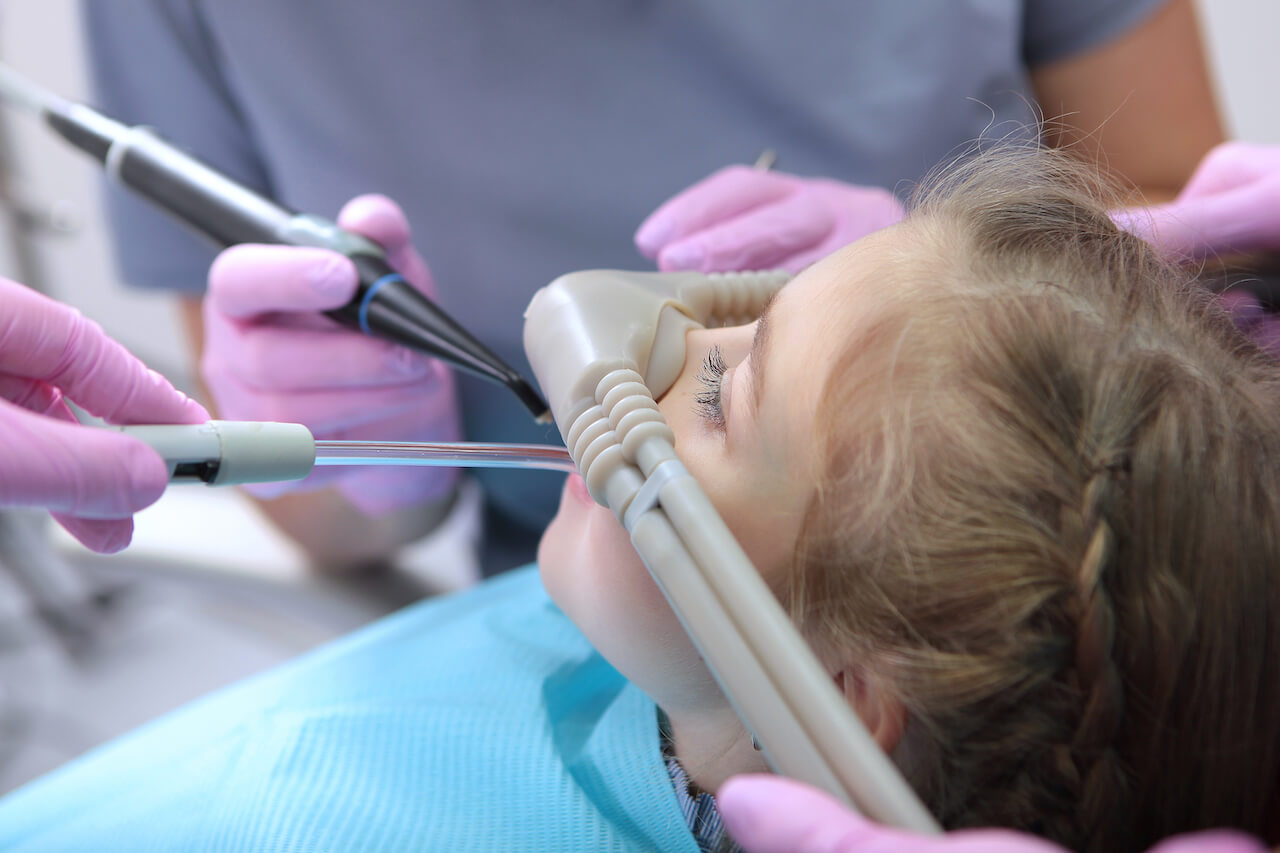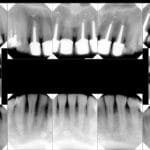Did laughing gas at the dentist go the way of the dinosaur? While it might seem less common, nitrous oxide hasn’t vanished. This article explores the evolution of nitrous oxide in dentistry, addressing why it may appear less prevalent and what the future holds.
Nitrous Oxide: Then and Now
So, is laughing gas a relic of the past? Not quite. While it’s true you might encounter it less often, nitrous oxide remains a valuable tool in many dental practices. It’s simply no longer the only option, which is a positive development in modern dentistry.
Why the Shift? Exploring the Evolving Landscape of Sedation
Just as technology evolves, so too does dentistry. The perceived decline in nitrous oxide use likely stems from several interconnected factors, including advancements in sedation techniques, heightened safety awareness, and a growing emphasis on personalized care. Let’s delve into these factors:
- More Choices: Modern dentistry offers a wider menu of sedation options. Think of it like choosing between different pain relievers—aspirin, ibuprofen, acetaminophen—each with its own strengths. Dentists now have a similar array of choices for sedation, allowing them to tailor the approach to each patient and procedure. [See Alternatives to Nitrous Oxide]
- Safety First: While generally safe, potential long-term risks associated with nitrous oxide exposure for dental professionals, though rare, have contributed to its decreased use. This, coupled with advancements in other sedation techniques, has led some dentists to opt for alternatives, especially for longer procedures. Learn more about how safety protocols are shaping the future of dental sedation.[https://www.lolaapp.com/]
- Personalized Care: Today’s dentistry emphasizes personalized care. This means choosing the right sedation method for the specific individual and procedure. It’s like selecting the right wrench for a specific bolt – you need the perfect fit.
Pros and Cons: Weighing the Benefits and Risks
Like any medical procedure or medication, using nitrous oxide has potential benefits and risks:
Pros:
- Rapid Onset and Recovery: The effects of nitrous oxide appear quickly and dissipate just as fast, making it convenient for shorter procedures. Patients can often drive themselves home, unlike with deeper sedation methods.
- Non-invasive: No needles are needed! A major advantage for those with needle anxiety. Inhaling the gas is generally more comfortable and less intimidating than an injection.
- Adjustable Sedation Levels: Dentists can fine-tune the concentration of nitrous oxide during the procedure, adjusting the sedation level to the patient’s comfort.
- Relatively Safe: When administered by trained professionals, nitrous oxide is generally safe for most healthy individuals.
Cons:
- Mild Side Effects: Some experience nausea, headaches, or dizziness, though these are usually temporary.
- Not for Everyone: Pregnant women, individuals with certain respiratory conditions, or those with a history of substance abuse might not be suitable candidates.
- Limited Sedation Depth: Nitrous oxide offers conscious sedation; the patient remains awake and responsive. Deeper sedation may be necessary for more involved procedures.
- Potential (though rare) Complications: In rare cases, more serious complications can arise. Like any medication, nitrous oxide is not entirely risk-free.
Alternatives to Nitrous Oxide: A Personalized Approach
Modern dentistry emphasizes personalized care, tailoring sedation to the individual and procedure. Options include:
- Local Anesthesia: Numbing the specific area, like a targeted pain blocker.
- Oral Sedatives: Pills that help you relax but keep you awake. They are like a mild tranquilizer, easing anxiety.
- IV Sedation: Deeper sedation, ideal for complex or lengthy procedures. It’s like a temporary sleep, making you unaware during treatment.
- General Anesthesia: Used for major procedures, inducing complete unconsciousness. It’s like a deep slumber, ensuring you feel nothing.
These options accommodate various needs and anxiety levels.
The Niche of Nitrous: Where It Still Shines
Nitrous oxide is particularly useful for:
- Children: It can be a less intimidating option than other sedation methods, helping children stay calm during their visits. Do you find yourself or your child struggling with thumbsuck teeth? Discover effective strategies and solutions.
- Mild Anxiety: A good choice for individuals with mild anxiety who don’t require deeper sedation for shorter procedures.
- Specific Medical Conditions: In some cases, it may be the safest option when other sedation methods are not recommended.
Future of Nitrous Oxide: Ongoing Evolution
Research in dental sedation continues, exploring new medications and techniques. This ongoing exploration likely means even more options for comfortable dentistry in the future.
Why don’t UK dentists use nitrous oxide anymore?
The perception that UK dentists have abandoned nitrous oxide isn’t entirely accurate. While its use might seem less frequent, the situation is more nuanced. Like landline phones, they’re still around, but mobile phones are more common. Similarly, nitrous oxide’s role in UK dentistry has evolved.
From Commonplace to Considered Use: Understanding the Shift
Nitrous oxide has a rich history in dentistry, effectively easing anxiety for generations. The shift likely relates to several factors, including a heightened focus on safety and the availability of alternative sedation techniques.
Safety First: A Priority for Patients and Professionals
Increased emphasis on patient and staff safety is a key driver. While generally safe, nitrous oxide can have rare complications. Some patients with specific health conditions might not be suitable candidates. For dental staff, long-term nitrous oxide exposure is a concern, necessitating modern safety measures and ventilation systems. This ongoing focus on safety has spurred exploration into other sedation techniques.
Modern Sedation Choices: A Range of Options
The availability of diverse sedation options allows for personalized care, much like how smartphones offer more features than old rotary phones. Oral sedatives offer convenient relaxation, while IV sedation provides deeper relaxation that can be adjusted during procedures. For highly anxious individuals or complex cases, general anesthesia is an option. This variety allows dentists to tailor sedation to individual needs, explaining some of the shift from the “one-size-fits-all” approach of solely using nitrous oxide.
Nitrous Oxide’s Niche: Where It Remains Relevant
Nitrous oxide is still a valuable tool in specific situations, especially in pediatric dentistry and for patients with mild anxiety or medical conditions where other options might be unsuitable.
The Future of Dental Sedation: Advancing Patient Care
Ongoing research promises new possibilities for managing anxiety and pain. The focus will likely remain on personalized care. Open communication between patients and dentists is crucial to ensuring comfortable dental visits.
Is nitrous oxide still used in dentistry?
The idea that nitrous oxide has vanished from dentistry isn’t entirely true. Though less common than before, it hasn’t disappeared completely. It’s similar to rotary phones—still around but mostly replaced by cell phones.
The Evolving Story of Laughing Gas
Nitrous oxide has been used in dentistry since the 1840s, revolutionizing pain management. Over time, as with any medical practice, understanding of potential risks associated with nitrous oxide grew, even if rare.
Why the Shift? Understanding the Changing Landscape
The development of safer alternatives and increased awareness of potential risks have influenced the shift. Modern sedation options offer more precision and personalized pain and anxiety management. While rare, potential complications like hypoxia (low oxygen levels) and tracheal injury (in cases of vomiting), though uncommon, understandably cause some caution. Additionally, prolonged exposure can present occupational hazards for dental professionals.
Modern Alternatives: Personalized Sedation
Modern dentistry offers personalized sedation choices, like choosing the right tool for the job. Oral sedatives, IV sedation, and general anesthesia provide various levels of control, tailored to individual needs and procedure complexity.
Nitrous Oxide’s Role: Kids and Special Cases
Nitrous oxide remains valuable, especially in pediatric dentistry and special needs cases. For children, it can be less intimidating, and for certain individuals with disabilities or medical conditions, it might be safest. Strict safety protocols are essential when used in these circumstances.
The Future of Nitrous Oxide: Continued Evolution
The future likely involves continued use in specific areas along with ongoing research and stricter safety measures. Patient comfort and safety are paramount, and dental practices will adapt as new options and knowledge emerge.
Why have dentists stopped using nitrogen dioxide?
The question mentions nitrogen dioxide, which is incorrect. Dentists use nitrous oxide (N2O), sometimes called “laughing gas.” While you might hear about it less, it’s still available in many dental offices. Its perceived decline likely comes from several factors.
Dentistry continually evolves with new technologies and understandings. The development of other sedation methods offers varied relaxation levels, tailoring to different patient needs and anxieties without rendering nitrous oxide obsolete. Concerns about long-term exposure for dental professionals, while rare, also influence the shift.
Nitrous Oxide: A Balanced View
Using nitrous oxide, like any medical procedure, has pros and cons.
Pros:
- Rapid Onset/Recovery: Convenient for shorter procedures.
- Non-invasive: No needles, reducing anxiety for many.
- Adjustable Sedation: Personalized comfort.
- Safe for Most: Generally safe when administered correctly.
Cons:
- Mild Side Effects: Nausea, headaches, or dizziness can occur.
- Not Universal: Unsuitable for some due to pregnancy, respiratory conditions, or substance abuse history.
- Limited Sedation: Deeper sedation might be needed for complex procedures.
- Occupational Hazards (Rare): Requires safety measures and proper ventilation.
Nitrous Oxide in Modern Dentistry
Nitrous oxide remains a valuable option for specific situations, like pediatric dentistry, patients with mild anxiety, or those with particular medical needs.
The Future of Dental Sedation.
The future probably involves a mixed approach, with dentists choosing the best option based on individual needs. Continued research and development in sedation promise further enhancements to patient comfort and safety. Open communication between patients and dentists is key for a relaxed dental experience.
- Unlocking Francis Alexander Shields’ Finance Empire: A Comprehensive Biography - July 12, 2025
- Unveiling Francis Alexander Shields: A Business Legacy - July 12, 2025
- Francis Alexander Shields’ Business Career: A Comprehensive Overview - July 12, 2025















